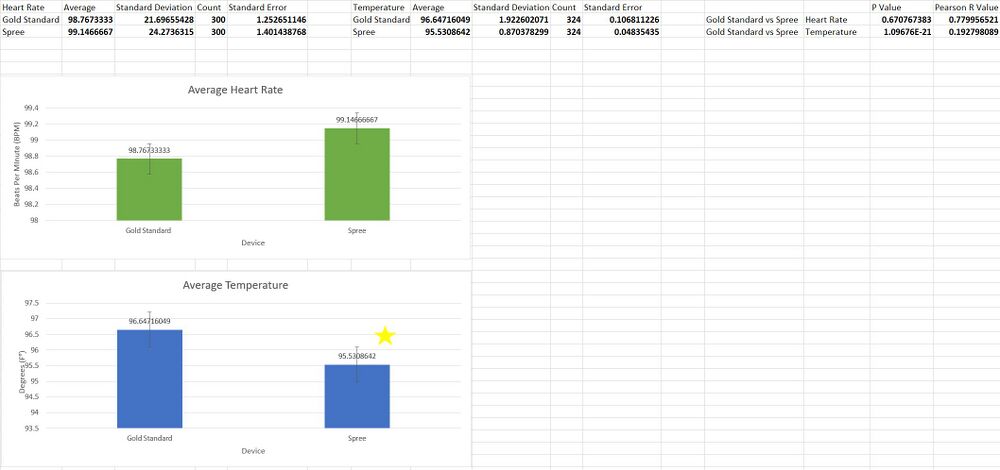BME100 s2017:Group3 W8AM L3
| Home People Lab Write-Up 1 | Lab Write-Up 2 | Lab Write-Up 3 Lab Write-Up 4 | Lab Write-Up 5 | Lab Write-Up 6 Course Logistics For Instructors Photos Wiki Editing Help | |||||||
OUR TEAM
LAB 3 WRITE-UPDescriptive Stats and Graph
Inferential StatsA paired t-test was used for both the oral thermometer and pulse ox, due to the comparison of two samples.
Standard Deviation Pulse Ox Gold Standard : 21.70 Standard Deviation Pulse Ox Spree: 24.27 R-value: 0.78 T-test (p-value): 0.671 Temperature Standard Deviation Oral Thermometer Gold Standard: 1.92 Standard Deviation Oral Thermometer Spree: 0.87 R-value: 0.193 T-test (p-value): 1.067*10^-21
Design Flaws and RecommendationsThe primary design flaw that the device consisted of is failure to accurately measure the internal temperature of the user, causing the overall product to be unreliable even if the pulse ox properly functioned without flaws. In order to reduce the error, a solution to the temperature dilemma could be to instead provide the user with colors that indicate the range of body temperature. Overall, by increasing the accuracy or reading of the internal body temperature of the device compared to the original, the overall quality and reliability of the product will drastically increase.
Experimental Design of Own DeviceFor an experiment: The first objective would be to locate a diverse sample population of people that are in need of a mobility enhancing exoskeleton. This sample, ranging of different ages and mobility constraints, will be given our exoskeleton and the amount of battery used by certain tasks and overall battery life per day will be measured. Some of these tasks can be as simple as a typical day of walking, or even analyzing the battery usage during certain exercises. Then, we would measure both the battery percentage used per task and per day and compare this to our competitor exosuits in order to determine if our exosuit is more efficient. As for actual customer satisfaction, we would compare both our own exoskeleton and our competitors’ exoskeleton with common tests, such as sitting, standing, and walking speed. The results of these will then tell us whether our device is more efficient without sacrificing viability.
|
|||||||

